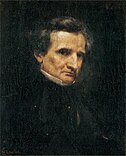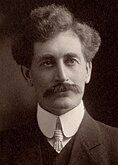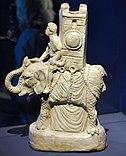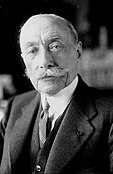Wikipedia:Today's featured article/December 2023
| << | Today's featured articles for December 2023 | >> | ||||
|---|---|---|---|---|---|---|
| Su | Mo | Tu | We | Th | Fr | Sa |
| 1 | 2 | |||||
| 3 | 4 | 5 | 6 | 7 | 8 | 9 |
| 10 | 11 | 12 | 13 | 14 | 15 | 16 |
| 17 | 18 | 19 | 20 | 21 | 22 | 23 |
| 24 | 25 | 26 | 27 | 28 | 29 | 30 |
| 31 | ||||||
December 1
Florence Petty (1 December 1870 – 18 November 1948) was a Scottish social worker, cookery writer and broadcaster. During the 1900s she undertook social work in the deprived area of Somers Town in North London, demonstrating for working-class women how to cook inexpensive and nutritious foods. Much of the instruction was done in their homes. She published cookery-related works aimed at those also involved in social work, and a cookery book and pamphlet aimed at the public. From 1914 until the mid-1940s she toured Britain giving lecture-demonstrations of cost-efficient and nutritious ways to cook, including dealing with food shortages during the First World War. In the late 1920s and early 1930s, she was a BBC broadcaster on food and budgeting. Petty worked until she was in her seventies. She is considered to be a pioneer of social work innovations. Her approach to teaching the use of cheap nutritious food was a precursor to the method adopted by the Ministry of Food during the Second World War. (Full article...)
December 2
Ernest Roberts (21 February 1868 – 2 December 1913) was a Labor member of the South Australian House of Assembly, and then the Australian House of Representatives. Roberts emigrated to Australia from the UK and worked in Port Pirie, South Australia, where he was a member of its town council. In 1896, aged 28, he became the youngest person elected to the House of Assembly and quickly gained a reputation for his oratory. He served in South Africa twice during the Second Boer War, rising to the rank of captain. During his second period of service his term in the South Australian parliament expired. After returning home, he was the editor of a political newspaper before being elected to the House of Assembly again in 1905. He was elected to the federal House of Representatives in a by-election in 1908 and was appointed as an honorary minister in 1911. After a fiery parliamentary debate on 2 December 1913, Roberts collapsed and died, aged 45. His state funeral was attended by around 6,000 people. (Full article...)
December 3
The Thaddeus McCotter 2012 presidential campaign began when McCotter filed papers on July 1, 2011, to run for the Republican Party's 2012 nomination for President of the United States. He officially announced his candidacy the next day at a rock festival near Detroit. McCotter, a congressman from Michigan since 2003, was first mentioned as a potential candidate on an April 2011 episode of the Fox News show Red Eye. During his campaign, he focused on reform of government and Wall Street. Commentators noted that McCotter's lack of name recognition hindered his chances; he regularly received less than one percent support in Republican presidential preference polls. Following a last-place finish in the Ames Straw Poll and the lack of any invitation to presidential debates, he dropped his candidacy on September 22, 2011, and endorsed Mitt Romney. He resigned from Congress in July 2012 amid a fraud investigation surrounding his congressional re-election campaign. (Full article...)
December 4
Abishabis (died 1843) was a Cree religious leader and prophet of a movement that spread during the 1840s among the Cree communities in what is now northern Manitoba and Ontario. His preaching, an admixture of Christianity and Cree beliefs, caused some Cree people to stop hunting furs, angering the Hudson's Bay Company and reducing its profits. In 1843, Abishabis was arrested on suspicion of murdering a First Nations family. While he was imprisoned at Fort Severn, a group of people broke in, took him from his cell, murdered him, and burned his body. His followers either slowly disavowed his teachings and destroyed their relics from the movement, or practiced the religion in secret. Abishabis had preached that he visited heaven and that followers could use a Cree writing system to create religious relics. His followers did not deify him but believed his teachings were a divine revelation. In 1930, it was reported that stories about him were passed down by the Cree people, who stated that he had brought them Christianity. (Full article...)
December 5
Hurricane Erika was a weak hurricane that struck northeastern Mexico in August of the 2003 Atlantic hurricane season. Erika was the eighth tropical cyclone, fifth tropical storm, and third hurricane of the season. At first, the National Hurricane Center did not designate it as a hurricane because initial data suggested winds of only 70 mph (110 km/h) at Erika's peak intensity, but it was retroactively deemed a hurricane based on further data. Developing in the eastern Gulf of Mexico on August 14, Erika moved quickly westward and strengthened under favorable conditions. It made landfall as a hurricane on northeastern Mexico on August 16. The storm's low-level circulation center dissipated by the next day. However, the storm's mid-level circulation persisted for another three days, emerging into the Pacific and moving northwestward over Baja California, before dissipating on August 20. Two people were killed in northeastern Mexico when their vehicle was swept away by floodwaters. (Full article...)
December 6
"Janet(s)" is the tenth episode of the third season of The Good Place. Written by Josh Siegal and Dylan Morgan and directed by Morgan Sackett, it originally aired on NBC on December 6, 2018. The episode sees Eleanor, Chidi, Tahani, and Jason accidentally transformed into versions of Janet, all played by D'Arcy Carden (pictured). Meanwhile, Michael (Ted Danson) and the real Janet (Carden) investigate if the afterlife system that sorts good and bad acts has been manipulated. Rehearsals for the episode began earlier than usual so Carden could learn to play the other characters. The episode required more visual effects than previous episodes. "Janet(s)" was watched by 2.58 million Americans in its original broadcast and was well received by critics; Carden's performance was widely praised. Themes covered include the meaning of the self, which the writers had studied in preparation. It was nominated for a Primetime Emmy Award for writing and won a Hugo Award. (Full article...)
December 7
Ford Island is an islet in the center of Pearl Harbor, Oahu, in the US state of Hawaii. Its original area of 334 acres (135 ha) was increased during the 1930s to 441 acres (178 ha) with fill dirt after the US Navy dredged Pearl Harbor to accommodate battleships. The island was the site of a Hawaiian fertility ritual until missionaries stopped the practice by 1830. It was given by Kamehameha I to Spanish deserter Francisco de Paula Marín, and was later owned by physician Seth Porter Ford. In 1917 the US Army bought part of it for use by an aviation division, and by 1939 it was taken over by the US Navy. It was at the center of the attack on Pearl Harbor on December 7, 1941, and was designated a National Historic Landmark in 1964. By the late 1990s hundreds of millions of dollars had been invested in real estate development and infrastructure. Ford Island is home to the USS Arizona memorial, the USS Missouri museum, the Pacific Warfighting Center, and the Pacific Tsunami Warning Center. (Full article...)
December 8
"White Horse" is a single by Taylor Swift (pictured) from her second studio album, Fearless. A country pop song, the ballad is driven by a finger-picked guitar and includes piano and cello accents. The lyrics incorporate fairy-tale imagery of princesses and white horses: a narrator is heartbroken that her boyfriend is not an ideal figure and leaves her town to find another partner. Big Machine Records released the track to US country radio on December 8, 2008. Music critics lauded "White Horse" for its somber production and portrayal of heartbreak, but some found the lyrics uncreative. In 2010, the song won Grammy Awards for Best Country Song and Best Female Country Vocal Performance. In the US, the single peaked at number 13 on the Billboard Hot 100 and number 2 on the Hot Country Songs chart. It was also certified in the US, Australia and Canada. Following a 2019 dispute regarding the ownership of Swift's back catalog, she re-recorded the song for her album Fearless (Taylor's Version). (Full article...)
December 9
Ohmdenosaurus is a genus of sauropod dinosaur that lived during the Early Jurassic epoch in what is now Germany. The only known specimen (pictured) – a tibia (shinbone) and ankle – was discovered in rocks of the Posidonia Shale near the village of Ohmden. The specimen is exhibited in a local museum, where, in the 1970s, the German palaeontologist Rupert Wild recognised it as the remains of a sauropod. One of the earliest known sauropods, Ohmdenosaurus was quadrupedal (four-legged) and already had the columnar limbs typical for the group. It was small for a sauropod, with an estimated length of 3 to 4 m (10 to 13 ft). Its relationships to other sauropods remain uncertain due to the incompleteness of its remains. The Posidonia Shale was deposited within a shallow inland sea. Ohmdenosaurus was a terrestrial animal, so the specimen must have been transported by predators or water currents at least 100 km (62 mi) from the shoreline to its site of burial. It is the only dinosaur fossil known from the shale. (Full article...)
December 10
Doom is a first-person shooter game developed and published by id Software, released on December 10, 1993. The player assumes the role of a space marine fighting through hordes of undead humans and invading demons. The game is presented with 3D graphics, with 2D enemies and objects. John Carmack (pictured) created the 3D game engine, with action-heavy design by John Romero and Sandy Petersen. Despite controversy over its graphic violence, Doom was a critical and commercial success, earning a reputation as one of the best and most influential games of all time and shifting the public perception of the entire medium. It sold an estimated 3.5 million copies by 1999, and up to 20 million people played it within two years of launch. Termed the "father" of first-person shooters, Doom sparked the rise of online games and communities. It led to an array of imitators and clones, as well as a robust Doom modding scene. Doom has been ported to a variety of platforms, and spawned a long-running franchise. (Full article...)
December 11

Hector Berlioz (11 December 1803 – 8 March 1869) was a French Romantic composer. His output includes orchestral works such as Harold in Italy, choral pieces including his Requiem and L'enfance du Christ, and works of hybrid genres such as the "dramatic symphony" Roméo et Juliette and the "dramatic legend" La damnation de Faust. Expected to enter medicine, Berlioz defied his family by taking up music, and won the Prix de Rome in 1830. Berlioz married the Irish Shakespearean actress Harriet Smithson, who inspired his first major success, the Symphonie fantastique, in which an idealised depiction of her occurs throughout. His first opera, Benvenuto Cellini, was a failure. The second, the epic Les Troyens, was so large in scale that it was never staged in its entirety during his lifetime. Meeting only occasional success in France as a composer, Berlioz turned to conducting, in which he gained an international reputation. He also wrote musical journalism throughout much of his career. (Full article...)
December 12
The City Hall and Raffles Place MRT stations are paired cross-platform interchanges on the North–South line (NSL) and East–West line (EWL) of the Singapore Mass Rapid Transit (MRT) system. Both are situated in the Downtown Core district: City Hall station is near landmarks such as the former City Hall, St Andrew's Cathedral and the Padang, while Raffles Place station serves Merlion Park, The Fullerton Hotel and the Asian Civilisations Museum. The stations were first announced in 1982. Constructing the tunnels between the City Hall and Raffles Place stations required the draining of the Singapore River. The stations opened on 12 December 1987 as part of the MRT extension to Outram Park station. Cross-platform transfers between the NSL and EWL began on 28 October 1989, ahead of the split of the MRT network into two lines. Both stations are designated Civil Defence shelters. City Hall station features a mural by Simon Wong which depicts government buildings in the area, while two murals at Raffles Place station by Lim Sew Yong and Thang Kiang How depict scenes of Singapore's history. (See City Hall MRT station and Raffles Place MRT station.)
December 13
The half sovereign is a British gold coin denominated at one-half of a pound sterling. It was first struck in 1544, but was discontinued after 1604. In 1817, as part of the Great Recoinage, half sovereigns and sovereigns were reintroduced. Until the half sovereign was discontinued as a currency coin, it was struck in most years and circulated widely. In addition to being coined in London, it was struck at the colonial mints in Australia and South Africa. It was replaced in Britain from 1914 by paper currency, and was discontinued in Australia in 1920 and South Africa in 1926. After that, it was struck in the coronation years of 1937 and 1953. It has been struck for sale by the Royal Mint as a collector's piece since 1980, and as a bullion coin since 1982; it does not circulate due to the value of the gold it contains. In addition to the portrait of the reigning monarch, the coin features in most years an image of Saint George and the Dragon, designed by Benedetto Pistrucci. (Full article...)
December 14
The Temple of Apollo Palatinus was a temple to the god Apollo in Rome, constructed on the Palatine Hill on the initiative of Augustus between 36 and 28 BCE. It was associated with Augustus's victories at the battles of Naulochus and Actium; the latter was extensively memorialised through its decoration. The temple represented the restoration of Rome's golden age and Augustus's devotion to religious and political duty. Its precinct was used for diplomatic functions and meetings of the Roman Senate. Augustan poets frequently praised the temple and its lavish artistic decoration and statuary. The temple was destroyed in a fire in 363 CE, which was rumoured to be an act of arson committed by Christians. The incomplete remains of the temple have been excavated and partially restored since the nineteenth century. Modern assessments of the temple have variously treated it as a Hellenising break with Roman tradition and as a conservative attempt to reassert the values of the Roman Republic. (Full article...)
December 15

T1 was a seagoing torpedo boat, operational between 1914 and 1955. Built as 76 T for the Austro-Hungarian Navy, and armed with two 66 mm (2.6 in) guns and four 450 mm (17.7 in) torpedo tubes, she could carry 10 to 12 naval mines. During World War I she performed convoy, escort and minesweeping tasks, anti-submarine operations and shore bombardment missions. Following Austria-Hungary's defeat in 1918 she and seven other 250t-class boats were allocated to the Royal Yugoslav Navy, as its only modern sea-going vessels. Renamed T1, she was involved in training exercises and cruises. Captured by the Italians during the Axis invasion of Yugoslavia in April 1941, she served with the Royal Italian Navy. Following the Italian capitulation in September 1943, she was returned to the Yugoslav Navy. After World War II she was refitted and served as Golešnica until 1955. Sunk as a target ship in the Bay of Kotor, she is now a recreational dive site. (This article is part of a featured topic: Ships of the Royal Yugoslav Navy.)
December 16
Lever House is an office building at 390 Park Avenue in Midtown Manhattan, New York City, that was originally the US headquarters of the soap company Lever Brothers, a subsidiary of Unilever. Constructed from 1950 to 1952, the building is 307 feet (94 m) tall and has 21 office stories topped by a triple-height mechanical section. It was designed by Gordon Bunshaft and Natalie de Blois of Skidmore, Owings & Merrill in the 20th-century modern International Style. Lever House was the second skyscraper in New York City with a glass curtain wall, after the United Nations Secretariat Building. The skyscraper was nearly demolished in the 1980s before being designated as a city landmark. After the construction of Lever House, many masonry residential structures on Park Avenue in Midtown were replaced with largely commercial International Style office buildings. Its design was also copied worldwide by buildings such as the Emek Business Center in Ankara, Turkey. (Full article...)
December 17
The Oppenheimer security hearing, conducted by the US Atomic Energy Commission (AEC) in 1954, explored the background, actions and associations of J. Robert Oppenheimer (pictured). He had headed the Los Alamos Laboratory during World War II, playing a key part in the Manhattan Project that developed the atomic bomb. Doubts about Oppenheimer's loyalty dated back to the 1930s, when he was associated with Communist Party USA members, including his wife Katherine. He was involved in disputes over the types of nuclear weapons the country required, technical disputes over the feasibility of the hydrogen bomb, and personal conflict with AEC commissioner Lewis Strauss. The panel found that he was loyal and discreet, but did not recommend that he regain his security clearance. This ended his role in government, and he became an academic exile, cut off from his former career and the world he had helped to create. The findings were seen as fair by some and as an expression of McCarthyism by others. (Full article...)
December 18
Not My Responsibility is a 2020 American short film written and produced by singer-songwriter Billie Eilish. A commentary on body shaming and double standards placed upon young women's appearances, it features a monologue from Eilish about the media scrutiny surrounding her body. The film is spoken-word and stars Eilish in a dark room, where she gradually undresses before submerging herself in black substance. The film premiered during Eilish's Where Do We Go? World Tour on March 9, 2020, as a concert interlude, and was released online on May 26, 2020. Critics gave positive reviews, praising the commentary and tone, which they considered empowering. The film's audio was later included as a song on Eilish's second studio album, Happier Than Ever (2021). Some music journalists described it as the album's thematic centerpiece; others questioned its appearance on the tracklist, feeling that it lost its emotional impact without the visuals. (Full article...)
December 19
C. O. Brocato (1929–2015) was an American scout, coach and football player best known for his work with the Houston Oilers (later the Tennessee Titans), for which he was a scout from 1974 to 1976, and again from 1981 until his death. A native of Shreveport, Louisiana, Brocato attended St. John's High School and played college football for Baylor. Drafted in 1953 by the Chicago Cardinals, he left during training camp to pursue a coaching career. He spent eleven years as head coach at his high school alma mater. He was defensive coordinator for Northern Arizona from 1969 to 1970, and for Texas–Arlington from 1971 to 1973. He then joined the Oilers as a scout and became regarded as one of the greatest in history in that role. Brocato helped his team draft several players who went on to the Pro Football Hall of Fame. He also invented the three-cone drill, one of the main events at the NFL Scouting Combine. He was a semifinalist for induction to the Hall of Fame for the classes of 2023 and 2024. (Full article...)
December 20
Tolui (c. 1191 – 1232) was a prominent general and prince of the early Mongol Empire. The fourth son of Genghis Khan and his first wife Börte, Tolui came to prominence in 1221 during the Mongol invasion of the Khwarazmian Empire—contemporary chroniclers claimed that his army killed more than three million people while capturing Merv and Nishapur in Khorasan. While modern historians consider this figure exaggerated, Tolui's campaign was undoubtedly brutal. A candidate to inherit his father's empire, Tolui was passed over in favour of his brother Ögedei; Tolui served as regent between Genghis's death in 1227 and Ögedei's coronation in 1229. He was instrumental in subduing the Chinese Jin dynasty, before dying in mysterious circumstances in 1232—explanations range from his self-sacrifice in a shamanic ritual to being poisoned by Ögedei. Led by his wife Sorghaghtani Beki, Tolui's family would become very influential—their sons Möngke and Kublai both acceded to the Mongol throne. (Full article...)
December 21
The Sun has appeared in fiction since classical antiquity, but for a long time it rarely received attention. Many of the early depictions viewed the Sun as essentially Earth-like and potentially habitable—a once-common belief about celestial objects in general known as the plurality of worlds—and depicted various kinds of solar inhabitants. As more became known about the Sun through advances in astronomy, in particular its temperature, fewer solar lifeforms were depicted. Instead, many stories focused on the death of the Sun, either by going out or going nova, and the ensuing havoc on Earth. Less disastrously, solar flares and eclipses have also been depicted. The Sun has been portrayed as a source of power—both in the form of solar power and superpower abilities. It poses a danger to spacecraft that approach it, which occurs in several stories. Overall, the Sun remains relatively uncommon as a point of focus in science fiction, particularly in comparison to depictions of Mars and Venus. (Full article...)
December 22
Antarctica is Earth's southernmost and least-populated continent. Situated almost entirely south of the Antarctic Circle and surrounded by the Southern Ocean, it contains the geographic South Pole, first reached in 1911 by Norwegian explorers. Antarctica is, on average, the coldest, driest, and windiest of the continents. It is mainly a polar desert, though 70% of the world's freshwater reserves are frozen there, which, if melted, would raise global sea levels by almost 60 m (200 ft). Native animals include mites, nematodes, penguins, seals and tardigrades. Where vegetation occurs, it is mostly in the form of lichen or moss. Some countries have territorial claims in Antarctica, but by treaty, the continent is set aside as a scientific preserve. During the summer months, about 5,000 people reside at research stations there, a figure that drops to around 1,000 in the winter. Despite Antarctica's remoteness, human activity significantly impacts it via pollution, ozone depletion, and climate change. (Full article...)
December 23
The battle of the Trebia was the first major battle of the Second Punic War, fought between the Carthaginian forces of Hannibal and a Roman army under Sempronius Longus on 22 or 23 December 218 BC near modern Piacenza in northern Italy. Each army had a strength of about 40,000 men; the Romans were stronger in infantry, while the Carthaginians were stronger in cavalry and fielded about 30 war elephants (statuette pictured). Hannibal used his Numidian cavalry to lure the Romans out of their camp and onto ground of his choosing. Fresh Carthaginian cavalry routed the outnumbered Roman cavalry, and Carthaginian light infantry outflanked the Roman infantry. A previously hidden Carthaginian force attacked the Roman infantry in the rear. Most of the Roman units then collapsed and most Romans were killed or captured, but 10,000 under Sempronius maintained formation, fought their way out and reached the safety of Piacenza. The following spring the Carthaginians moved south into Roman Italy and operated there for 15 years. (Full article...)
December 24
"Yes, Virginia, there is a Santa Claus" is a well-known line from an editorial by Francis Pharcellus Church titled "Is There a Santa Claus?", which appeared in the New York newspaper The Sun on September 21, 1897. Written in response to a letter by eight-year-old Virginia O'Hanlon asking whether Santa Claus was real, the editorial was initially published anonymously and Church's authorship was not disclosed until after he died in 1906. After its initial publication, it was quickly reprinted by other newspapers. As the editorial became increasingly popular over the years, The Sun began republishing it during the Christmas and holiday season, including every year from 1924 until the paper ceased publication in 1950. "Is There a Santa Claus?" is still widely reprinted during the holiday season and has been cited as the most reprinted newspaper editorial in the English language. It has been translated into around 20 languages and adapted as television specials, a film, a musical, and a cantata. (Full article...)
December 25
Pope Sisinnius was the bishop of Rome from 15 January 708 to his death on 4 February, succeeding Pope John VII. He was Syrian and his father was named John, but little else is known of his early life. At the time of his election to the papal throne, Sisinnius suffered from severe gout, leaving him weak. During the course of his twenty-day papacy, he consecrated a bishop for Corsica and ordered the reinforcement of the walls surrounding Rome, the papal capital. The popes of the time were not able to appoint all bishops, nor were they able to effectively govern the Catholic Church: they did not publish encyclicals or catechisms, and were not able to canonize saints or convene ecumenical councils. Like many of his immediate predecessors, Sisinnius was likely not a member of the upper class, but he was respected for his upright, moral disposition and concern for the people of Rome. On his death in Rome, Sisinnius was buried in Old St. Peter's Basilica. He was succeeded by Pope Constantine. (Full article...)
December 26
A 2–2 draw was played on 19 May 1977 between the English association football clubs Coventry City and Bristol City. The teams were playing their final match of the 1976–77 season in the Football League First Division, at Highfield Road (pictured), Coventry. Both teams faced potential relegation, along with Sunderland, who played their final game at the same time, against Everton at Goodison Park; the lowest-placed of the three teams would be relegated. As many Bristol City supporters were delayed in traffic, the kick-off at Highfield Road was delayed by five minutes. The score was 2–2 with five minutes remaining, when the supporters and players learned via the stadium scoreboard that Sunderland had lost to Everton and that a draw would let both Coventry and Bristol City escape relegation at Sunderland's expense. As a result, the last five minutes were played out with neither team's players attempting to score and the match finished as a 2–2 draw. A complaint by Sunderland was unavailing. (Full article...)
December 27
Niels Bohr (1885–1962) was a Danish physicist who created the first widely accepted model of atomic structure. In three articles published in 1913, he proposed the Bohr model of the atom. Faced with the opposing particle and wave interpretations of atomic phenomena in the new quantum mechanics, he proposed the complementarity principle of using both interpretations to fully explain the results. Bohr received the Nobel Prize in Physics in 1922. He founded the Institute of Theoretical Physics in Copenhagen, now known as the Niels Bohr Institute. He correctly predicted the properties of an undiscovered element, hafnium. Later, the element bohrium was named after him. During the 1930s, Bohr helped refugees from Nazism and in September 1943 fled to Britain to avoid arrest by the Germans. There he joined the Tube Alloys nuclear weapons project, and later the Manhattan Project. After the war, he was involved with the establishment of CERN. (Full article...)
December 28
October 1 is a 2014 Nigerian psychological thriller film written by Tunde Babalola, produced and directed by Kunle Afolayan (pictured), and starring Sadiq Daba, Kayode Olaiya, and Demola Adedoyin. In the film, Inspector Danladi Waziri (Daba) investigates the killings of young women in a village in Western Nigeria just before 1 October 1960 – the date Nigeria gained independence from British colonial rule. The film's budget was US$2 million. It premiered on 28 September 2014 and opened to international audiences on 3 October. October 1 deals with several themes, including the sexual abuse of children by religious authority figures, religious and ethnic conflict, politics in colonial Nigeria, and Nigeria's unification and independence. Critics positively reviewed the film, praising its cinematography, production design, costuming, writing, and acting. The film won several awards, including Best Feature Film, Best Screenplay, and Best Actor at the 2014 Africa International Film Festival. (Full article...)
December 29
Bouvet was a pre-dreadnought battleship of the French Navy, built in the 1890s, and armed with a main battery of two 305 mm (12 in) guns and two 274 mm (10.8 in) guns in individual turrets. A top speed of 18 knots (33 km/h; 21 mph) made her one of the fastest battleships in the world. Bouvet spent the majority of her peacetime career conducting routine training exercises and was withdrawn from front-line service in 1907. In early 1915 during World War I the ship participated in a series of attacks on the Ottoman fortifications guarding the Dardanelles. On 18 March 1915, during a major assault, the vessel was hit approximately eight times by shellfire but was not seriously damaged. While turning to withdraw, she struck a mine and sank within two minutes; only 75 men were rescued from a complement of 718. Two British battleships were also sunk by mines the same day, and the disaster convinced the Allies to abandon the naval campaign in favor of an amphibious assault on the Gallipoli Peninsula. (Full article...)
December 30
André Messager (30 December 1853 – 24 February 1929) was a French composer and conductor, whose best-known works are the ballet Les Deux Pigeons (1886) and the opéra comique Véronique (1898). His successes span the period from the late 19th century (Les p'tites Michu, 1897) to early 20th century (Monsieur Beaucaire, 1919), including musical comedies with Sacha Guitry and Yvonne Printemps. Many of his works were also produced in the West End and some on Broadway, some with long runs and numerous international revivals. Messager became a major figure in the musical life of Paris and then London, as a composer and as a prominent conductor in the concert hall and opera house, leading the Paris Opéra, among others. His music was known for its melodic and orchestral invention, musical craftsmanship, and characteristically French elegance and grace. Although most of his works have been infrequently revived, historians of music consider him the last major figure in French opéra comique and opérette. (Full article...)
December 31
The masked booby (Sula dactylatra) is a large seabird of the booby and gannet family, Sulidae. First described by the French naturalist René Lesson in 1831, the species is one of six in the genus Sula. It has a long pointed yellowish bill, long neck, aerodynamic body, long slender wings and pointed tail. The adult is bright white with black wings, a black tail and a dark face mask; at 75 to 85 cm (30 to 33 in) long, it is the largest species of booby. The sexes have similar plumage. The species is not threatened; it ranges across tropical oceans, except in the eastern Atlantic and eastern Pacific. Nesting takes place in colonies, generally on islands and atolls far from the mainland and close to the deep water required for foraging. Potential and mated pairs engage in courtship and greeting displays. The female lays two chalky white eggs in a shallow depression on flat ground away from vegetation. These birds are spectacular high-speed plunge divers, preying mainly on flying fish. (Full article...)



























